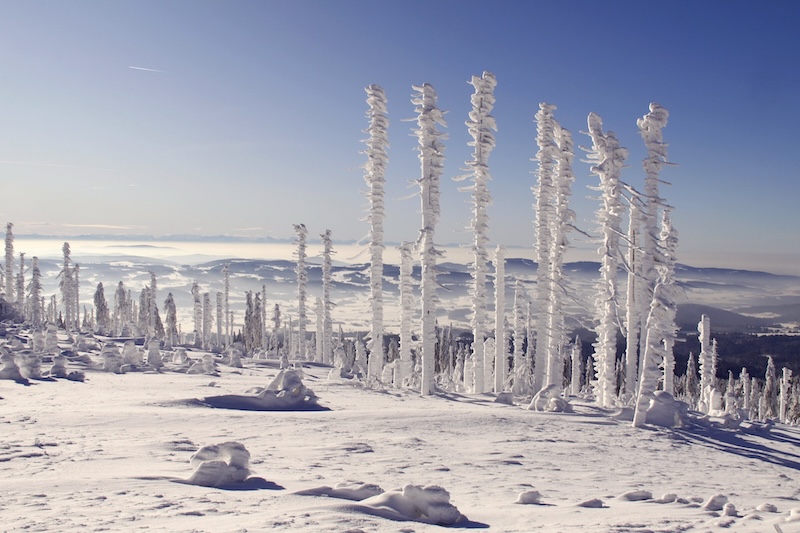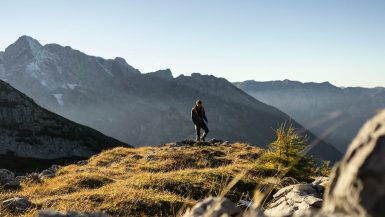Nestled in the southeastern part of Germany, the Bavarian Forest National Park (Nationalpark Bayerischer Wald) is a haven for nature lovers and outdoor enthusiasts. Established in 1970 as Germany’s first national park, it forms a continuous protected area with the neighboring Šumava National Park in the Czech Republic. This vast forested region, covering over 240 square miles, is renowned for its pristine wilderness, diverse wildlife, and stunning landscapes. Whether you’re an avid hiker, a wildlife enthusiast, or simply looking to escape the hustle and bustle of city life, the Bavarian Forest National Park offers something for everyone.
A Brief History and Significance
The Bavarian Forest has been a significant part of Bavarian culture and heritage for centuries. The park was established to protect the natural environment from industrial exploitation and to preserve its unique biodiversity. Over the years, it has become a model for conservation efforts worldwide, emphasizing natural regeneration and minimal human intervention. The motto of the park, “Let nature be nature,” reflects its commitment to allowing ecosystems to evolve naturally.
Geographical Features and Landscapes
The Bavarian Forest National Park is characterized by its rugged terrain, dense forests, and tranquil lakes. The park’s landscape is a mix of rolling hills, deep valleys, and high peaks, the highest of which is the Großer Rachel at 1,453 meters (4,767 feet). The park is also home to several pristine lakes, such as the Großer Arbersee and Rachelsee, which add to the area’s picturesque beauty.
One of the most striking features of the park is its ancient forests, which are among the last remaining temperate primeval forests in Central Europe. These forests are dominated by beech, fir, and spruce trees, some of which are over 400 years old. The park’s varied topography and climate conditions create diverse habitats that support a wide range of flora and fauna.
Flora and Fauna of the Bavarian Forest
The Bavarian Forest National Park is a biodiversity hotspot, hosting over 10,000 species of plants, animals, and fungi. The park’s extensive forests are home to a variety of tree species, including Norway spruce, European silver fir, and common beech. In the spring and summer, the forest floor is carpeted with wildflowers, mosses, and ferns, creating a vibrant and lush undergrowth.
The park’s fauna is equally diverse, with several species that are rare or endangered. Mammals such as red deer, roe deer, wild boar, and the elusive lynx roam the forests. The park is also a critical habitat for the capercaillie, a large woodland grouse, and the Ural owl. Birdwatchers can spot a variety of birds, including black woodpeckers, hazel grouse, and peregrine falcons.
One of the park’s major conservation successes has been the reintroduction of the Eurasian lynx. Once extinct in the region, the lynx was reintroduced in the 1980s and has since established a stable population. The park’s efforts to create a connected wilderness area with the Šumava National Park have been crucial in supporting this species’ recovery.
Outdoor Activities and Attractions
The Bavarian Forest National Park offers a wealth of outdoor activities that allow visitors to immerse themselves in nature. Here are some of the top attractions and activities in the park:
Hiking and Walking Trails
With over 300 kilometers (186 miles) of well-marked trails, the park is a paradise for hikers. Trails range from easy walks suitable for families to challenging routes for experienced hikers. Some popular trails include:
- The Rachelsee and Großer Rachel Trail: This trail takes you to the park’s highest peak, Großer Rachel, offering breathtaking views of the surrounding landscape. The trail passes through ancient forests and the serene Rachelsee, a glacial lake.
- Lusen Summit Trail: This trail leads to the summit of Lusen Mountain, known for its distinctive rocky peak. The hike offers stunning panoramic views and the chance to experience the park’s diverse ecosystems.
- The Forest History Trail: This educational trail provides insights into the park’s history, geology, and conservation efforts. Information boards along the route explain the natural processes that shape the forest.
Wildlife Watching
Wildlife enthusiasts will find plenty of opportunities to observe the park’s inhabitants in their natural habitats. The best times for wildlife watching are early morning and late evening when animals are most active. Some key spots for wildlife observation include:
- Tier-Freigelände (Animal Enclosures): Located near the park’s visitor centers, these enclosures allow visitors to see native animals up close, including lynxes, wolves, and otters. The enclosures are designed to mimic natural habitats, providing a safe environment for the animals.
- Hans-Eisenmann-Haus Visitor Center: This center offers exhibitions on the park’s wildlife and ecosystems. It also provides information on the best places and times to spot animals in the wild.
Cycling and Mountain Biking
The park has an extensive network of cycling and mountain biking trails that cater to all skill levels. From leisurely rides through scenic valleys to challenging mountain trails, there’s something for every cyclist. The well-marked routes and bike-friendly infrastructure make it easy to explore the park on two wheels.
Winter Sports
In winter, the Bavarian Forest National Park transforms into a snowy wonderland, offering a range of winter sports. Cross-country skiing is particularly popular, with over 80 kilometers (50 miles) of groomed trails. The park also has several designated snowshoeing trails, allowing visitors to explore the winter landscape at a slower pace. For those seeking more adrenaline, there are opportunities for downhill skiing and snowboarding at nearby resorts.

Tree Top Walk (Baumwipfelpfad)
One of the park’s most unique attractions is the Tree Top Walk, a wooden walkway that rises above the forest canopy. The walkway stretches for 1,300 meters (4,265 feet) and culminates in a spiral tower 44 meters (144 feet) high. The walk offers stunning views of the forest, the surrounding mountains, and, on clear days, even the distant Alps. Information panels along the route provide insights into the forest’s ecology and the importance of conservation.
Educational and Interactive Exhibits
The park places a strong emphasis on education and offers several interactive exhibits and programs for visitors of all ages. The Hans-Eisenmann-Haus Visitor Center and the Haus zur Wildnis (House of Wilderness) provide engaging exhibitions on the park’s natural history, wildlife, and conservation efforts. These centers also offer guided tours, workshops, and activities for children, making them a great stop for families.
Cultural and Historical Sites
In addition to its natural beauty, the Bavarian Forest National Park is rich in cultural and historical heritage. The region has a long history of human settlement, and several sites within and around the park offer a glimpse into its past.
The Glass Road (Glasstraße)
The Bavarian Forest is famous for its glassmaking tradition, which dates back to the Middle Ages. The Glass Road (Glasstraße) is a scenic route that passes through the heart of the forest, connecting several glassmaking towns and studios. Visitors can explore traditional glassblowing workshops, visit museums dedicated to the history of glassmaking, and purchase unique glass souvenirs.
Historical Villages
Several picturesque villages and towns surround the park, each with its own charm and history. Villages like Zwiesel, Bodenmais, and Grafenau offer traditional Bavarian architecture, cozy inns, and local crafts. These towns provide a perfect base for exploring the park and experiencing Bavarian culture.
The Forest Museum (Waldmuseum)
Located in the town of Zwiesel, the Forest Museum provides a fascinating look at the region’s history, culture, and natural environment. The museum’s exhibits cover a wide range of topics, from the history of forestry and glassmaking to the local flora and fauna. The museum also features a large collection of historical artifacts and tools used by forest workers.
Accommodation and Dining
The Bavarian Forest National Park offers a range of accommodation options, from rustic campsites and cozy guesthouses to luxurious hotels. Whether you’re looking to camp under the stars or enjoy the comforts of a spa resort, you’ll find something to suit your preferences.
Camping
For those who want to immerse themselves fully in nature, the park has several campsites that provide a back-to-basics experience. Campsites are well-maintained and offer basic amenities such as restrooms and picnic areas. Some popular camping spots include the Rachelsee campsite and the Mauth campsite.
Guesthouses and Hotels
The surrounding towns and villages offer a variety of guesthouses and hotels, ranging from budget-friendly options to high-end accommodations. Many guesthouses are family-run and provide a warm and welcoming atmosphere. Staying in a guesthouse or hotel also gives you the opportunity to enjoy local cuisine and hospitality.
Dining
Bavarian cuisine is hearty and flavorful, making use of fresh, locally-sourced ingredients. Traditional dishes include sausages, schnitzels, and hearty stews, often accompanied by freshly baked bread and local cheeses. Many restaurants in the region serve wild game, such as venison and wild boar, reflecting the park’s rich wildlife.
Local breweries produce a variety of excellent beers, including lagers, wheat beers, and bocks. Visiting a traditional beer garden is a must, where you can enjoy a cold brew along with a pretzel or a plate of sausages. For those with a sweet tooth, Bavarian desserts like apple strudel and Bavarian cream are a delightful treat.
Practical Information for Bavarian Forest
Getting There
The Bavarian Forest National Park is easily accessible by car, train, and bus. The nearest major city is Munich, which is about a two-hour drive from the park. The park is also well-connected to public transportation networks, with regular trains and buses running from Munich and other nearby cities.


